Calculate Out-The-Door Price
close
× ‹
All fields are required
Submodel
Select TPMS OptionTPMSTPMS: NOTPMS: YES
WHAT IS TPMS?Enter Zip Code WHY DO WE ASK ABOUT YOUR ZIPCODE?
ZIP code is needed for local pricing.">Why?
Cross Section
Aspect Ratio
Rim Diameter
Enter Zip Code Why?
7980 S Broadway
Littleton, CO
303.515.7308
Most stores are open nights and weekends
Directions
Store Hours:
| Day(s) | Hours |
|---|---|
| MON-FRI: | 7:00am-7:00pm |
| SAT: | 7:00am-6:00pm |
| SUN: | 9:00am-5:00pm |
| EASTER: | Closed |
Store Details Change Store Find a Store
Schedule An AppointmentLearn more about Oil Changes
7980 S Broadway
Littleton, CO
303. 515.7308
515.7308
Most stores are open nights and weekends
Directions
Store Hours:
| Day(s) | Hours |
|---|---|
| MON-FRI: | 7:00am-7:00pm |
| SAT: | 7:00am-6:00pm |
| SUN: | 9:00am-5:00pm |
| EASTER: | Closed |
Store Details Change Store Find a Store
Schedule An AppointmentLearn more about Brake Service
All fields are required
Engine
Enter Zip Code Why?
All fields are required
Submodel
Enter Zip Code Why?
FIRESTONE HAS BEEN THE NATION'S LEADING TIRE PROVIDER FOR MORE THAN A CENTURY.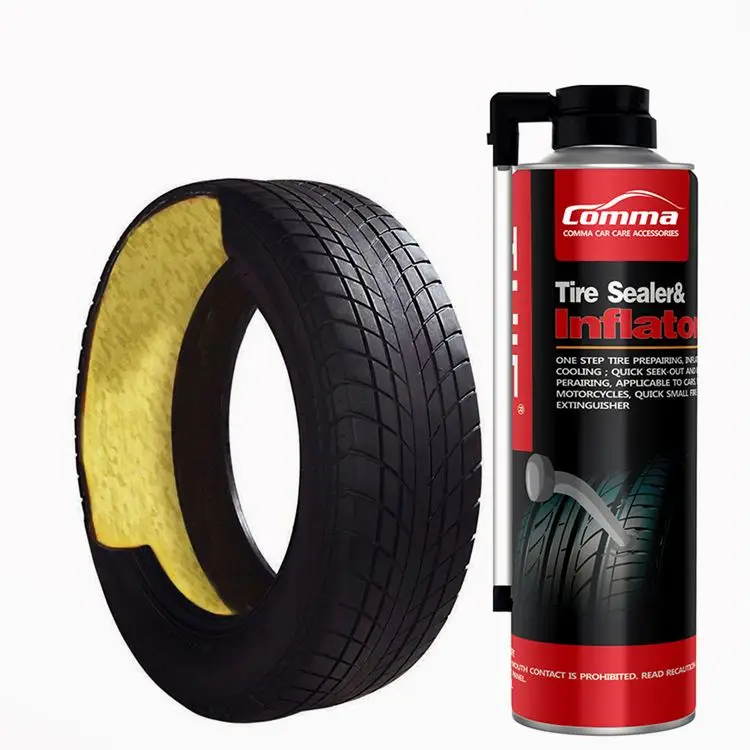
It's a tough road out there, and your tires bear the brunt of potholes, broken glass, nails, screws, and anything else that can puncture a tire. Firestone Complete Auto Care's flat tire repair services are the best in the business. We've been repairing tires since 1926, and we take pride in repairing America's tires. When tire damage strikes, come to Firestone Complete Auto Care–the tire repair shop you can trust.
If you suspect something is wrong with your vehicle's tires, don't hesitate to come into a Firestone Complete Auto Care near you. If your Tire Pressure Monitoring System (TPMS) light is on, you've hit something on the road, your tire is losing air, or maybe something just doesn't feel quite right, bring it in. One of our expert technicians will take a look and tell you if you need to repair or replace your tires.
Driving on a damaged tire can lead to additional (and more costly) rim damage and repairs, so it's best to have your tires examined at the first sign of trouble.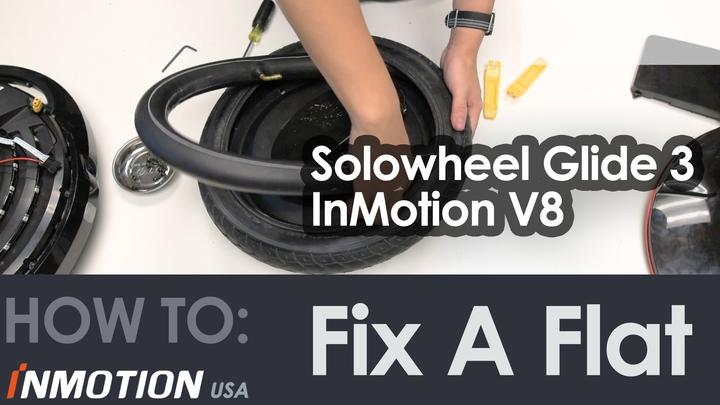 The solution might be as simple as needing one of our patch plugs if the tire puncture is addressed early on. In other cases, a leaking valve stem or valve core may need to be replaced with a new one or the TPMS sensor needs to be reprogrammed or replaced. Visit your nearest Firestone Complete Auto Care, and we'll take care of you and your vehicle tire repairs.
The solution might be as simple as needing one of our patch plugs if the tire puncture is addressed early on. In other cases, a leaking valve stem or valve core may need to be replaced with a new one or the TPMS sensor needs to be reprogrammed or replaced. Visit your nearest Firestone Complete Auto Care, and we'll take care of you and your vehicle tire repairs.
Schedule An appointment
Tire Repair & Patching/Plug
If your tires still have life left in their tread and are not over 10 years old, Firestone Complete Auto Care maybe be able repair or patch & plug them to get you back on the road quickly. Keep in mind not all tire damage can be patched if the puncture is too big.
Tire Replacement
Over time, the tread on your tires wears down, leading to compromised traction on the road and potentially dangerous driving conditions. Tires generally need to be replaced every 25,000 to 50,000 miles, depending on vehicle manufacturer recommendations and driving habits.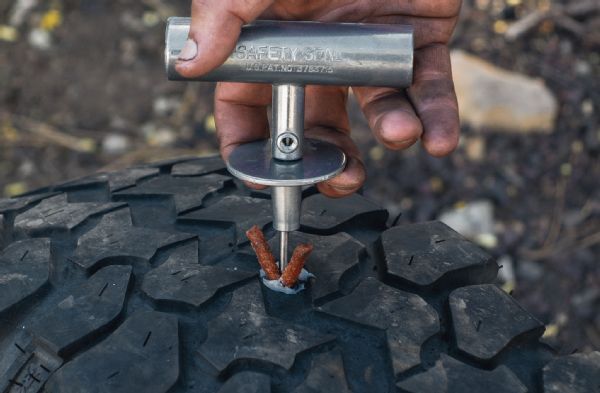
Tire Rotations & Balancing
When you have your tires rotated, you help increase the life of your tires by helping reduce uneven wear. Most vehicle manufacturers recommend a tire rotation about every 5,000 miles or at the manufacturer-recommended mileage. Tire balancing helps ensure weight is evenly distributed around your tires. It's necessary about every 5,000 miles or as recommended by your manufacturer. Balancing can lead to a smoother ride, less tire wear, and reduced strain on the drivetrain. When you think tire balancing, think safe, smooth, and efficient driving.
Wheel Alignments
It's best to have your alignment checked every 6,000 miles or twice a year. Even one misaligned wheel can cause the steering wheel to be off center and can lead to premature wear and tear on your vehicle over time. Keeping everything properly aligned ensures a smoother ride for you and a longer life for your tires.
Flat Repair
A flat or leaking tire can leave you stranded on the side of the road or lead to a situation where you lose control while driving. Take care of flat or leaking tires as early as possible to extend tire lifespan and ensure your tire doesn't leave you stranded.
Schedule An Appointment
All fields are required
Engine
Zip Code Entry Why?
Flat tires rarely happen at ideal times. Let Firestone Complete Auto Care help you with these answers to frequently asked flat tire questions.
To ensure a safe drive that doesn’t damage your rims or create more expensive repairs, change your flat tire with your spare tire before coming into your local Firestone Complete Auto Care center for flat tire repair.
It’s tempting to replace just the tire that's damaged, but replacing one tire at a time can present challenges down the road since the one tire will have a different tread depth and thus different accelerating, braking, and cornering abilities than all of the others.
Few things are more inconvenient than a flat tire —except back-to-back flat tires. Learn the reasons why you keep getting flat tires and what you can do to help prevent flat tires from deflating your spirits!
If your vehicle hits a pothole in the road, you may experience steering and suspension system misalignment and/or damage, tire punctures, bent rims, and more. When your vehicle experiences a sudden jolt from a pothole run-in, timely inspection is highly recommended.
Pothole damage may not be obvious right away, but it can wreak havoc on your entire car if it’s not addressed quickly and fixed right the first time.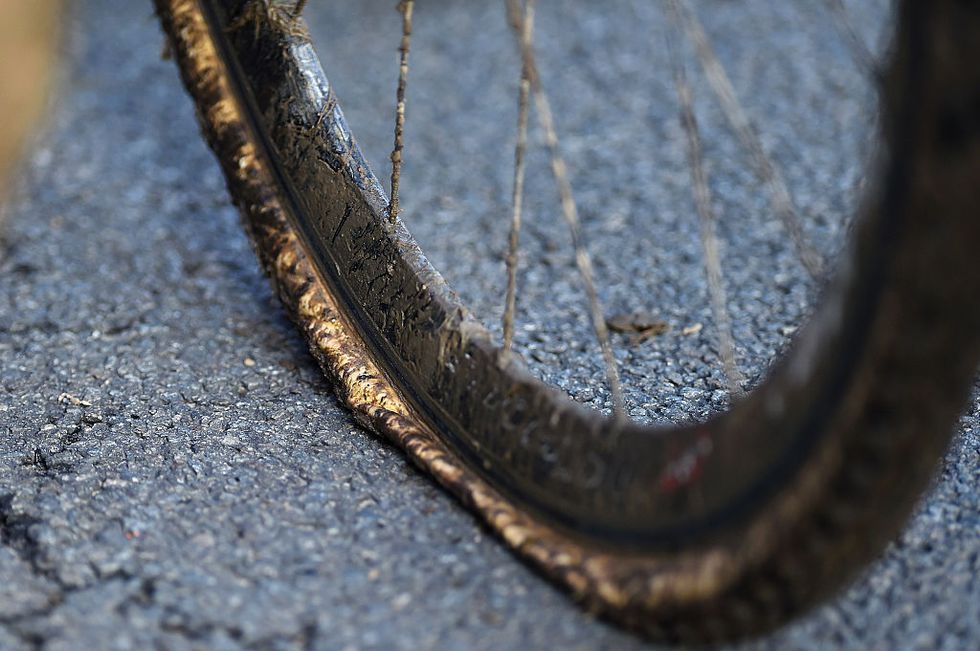 If you've had a recent run-in with a pothole, head to your local Firestone Complete Auto Care for a Complete Vehicle Inspection to check for any issues.
If you've had a recent run-in with a pothole, head to your local Firestone Complete Auto Care for a Complete Vehicle Inspection to check for any issues.
A tire plug is a quick fix for a tire that's leaking air from a nail or similar object that has punctured the tire. A tire plug fills the hole of the tire but is not reliable without a tire patch and not recommended to use alone. A patch is applied to the inside of the tire to further prevent an air leak and helps hold the plug in place. This allows a tire with ample useful life left in it to hold air reliably and keep you on the road for longer.
Run flat tires allow you to drive on a flat tire for a limited time with lesser risk than non-run flat tires. A Run Flat tire could be repaired if a nail or object is caught before tire damage occurs. However, if the tire is permanently damaged, it is required to replace a Run Flat tire with a new one.
The Tire Pressure Monitoring System light will illuminate if tire pressure is too low or part of the TPMS system has malfunctioned. Important TPMS warning light behavior:
Looking for the closest flat tire repair shop? Come to Firestone Complete Auto Care for a tire plug & patch or other tire repair service today!
Read More
Regular tire rotations can help prevent uneven tread wear and help your tires last longer. Schedule a tire rotation appointment at a Firestone Complete Auto Care near you today.
Schedule a tire rotation appointment at a Firestone Complete Auto Care near you today.
Read More
Knowing when to replace tires is as easy as measuring tire tread depth. Learn more about this important measurement and visit Firestone Complete Auto Care!
Read More
Tires
Even though winter is a season, all-season tires may not be the best choice for your climate. Read on to learn which type of tires are right for your vehicle!
Read More
Tires
Discover the most common reasons behind the slow leaks in your vehicle's tires. Learn how to diagnose this issue and find a permanent solution for your tires.
Learn how to diagnose this issue and find a permanent solution for your tires.
Read More
Tires
Need a fresh set of winter tires but don’t know what to look for? We have you covered. Read on to learn about tread patterns, tire compounds, ratings, and more!
Read More
LOAD 3 MORE
SHOWING 6 OF 12
View More Articles
{{storeNumber}}
{{storeName}}
{{link-icon "Call Us" mobileCallLink null "call-cta"}} {{link-icon "Directions" directions "_blank" "directions-cta"}}
{{address}}
{{city}}, {{state}} {{zip}}
{{#if activeFlag}} {{#ifCond mystore "or" myPreferredStore}} {{#ifCond storeType 'eq' "TPL"}}
*Call store for appointment {{phone}}
{{else}} {{#if onlineAppointmentActiveFlag }}
{{#if myPreferredStore}}
{{else}}
*Call store for appointment {{phone}}
{{/if}} {{/ifCond}} {{else}} {{#ifCond storeType 'eq' "TPL"}}
*Call store for appointment {{phone}}
{{else}}
Schedule Appointment {{#if onlineAppointmentActiveFlag}} {{else}}
*Call store for appointment {{phone}}
{{/if}}
{{/ifCond}} {{/ifCond}} {{else}}
*Temporarily Closed Due To: {{temporarilyClosedReason}}
{{/if}} {{#if isMilitaryStore}}
*This location is on an active US military base.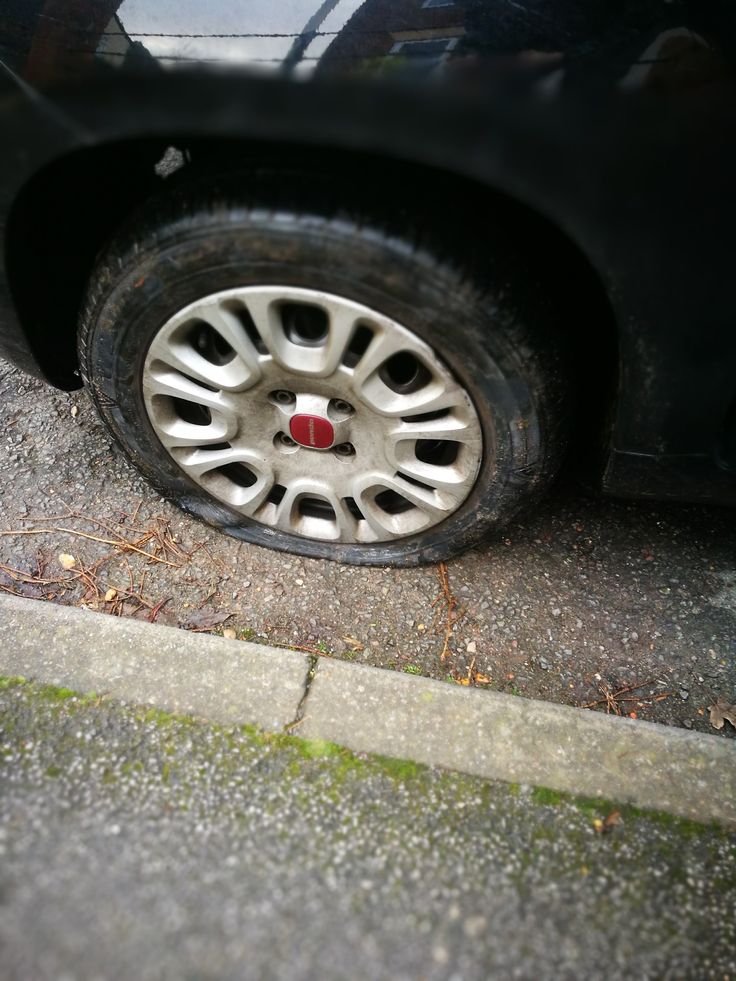 You may need military ID to access the location.
You may need military ID to access the location.
{{/if}}
{{#ifCond count 'eq' "3"}} Show More Stores {{/ifCond}}
So, you have a flat tire or one that’s leaking air. It’s not the end of the world. Luckily there are safe and cost-effective ways to properly repair most tire punctures. The purpose of this article is to show you the difference between a safe, permanent repair and a temporary string, plug or patch repair.
According to the National Highway Traffic Safety Administration (NHSTA) and the Tire Industry Association (TIA), the only method to properly repair a tire puncture is to fill the injury with a repair stem and back the stem with a repair patch. This is commonly known as a combination repair or a patch/plug repair.
Patch/plug repairs are most often performed using a one-piece repair unit that combines the repair stem and cap (or patch) into one unit. However, special circumstances may require the use of a two-piece combination repair (ex. If the angle of the puncture exceeds 35 degrees). The repair is then permanently bonded to the inside of tire and through the injury channel using a cold, chemical vulcanizing process. The repair essentially becomes part of the tire, creating an air-tight seal that keeps air in and moisture and contaminants out (more on this procedure below).
Tire Plugs and String Repairs are Temporary RepairsEmergency roadside plug repairs are NOT intended to be a permanent tire repair. Plugs and string repairs are designed to get you back up and rolling long enough to get home or to the nearest service center to perform a proper tire repair.
The common misconception with plug and string repairs is that because they hold air, they are safe to use.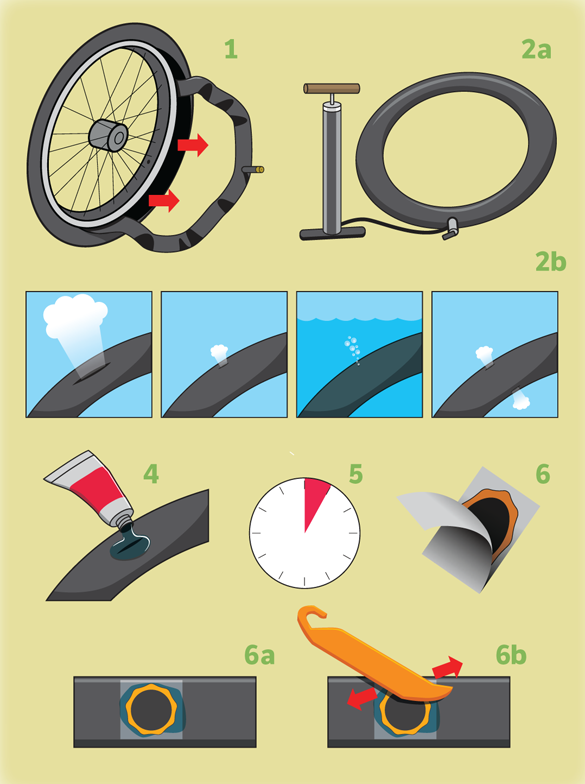 While it is true that many plug repairs do a great job of keeping air in the tire, that’s only part of the equation. Because they’re not completely sealing the injury, plug repairs may allow air and moisture to penetrate the body of the tire. Over time, this could lead to a dangerous (or even deadly) blowout.
While it is true that many plug repairs do a great job of keeping air in the tire, that’s only part of the equation. Because they’re not completely sealing the injury, plug repairs may allow air and moisture to penetrate the body of the tire. Over time, this could lead to a dangerous (or even deadly) blowout.
A tire repair that uses only a patch is also NOT considered proper or safe. A properly installed patch will do a great job of allowing the tire to hold air. However, similarly to the plug-only repair, the patch does not fill the injury channel. Therefore, air and moisture could seep into the tire from the tread surface and eventually damage the tire.
The Proper Tire Repair Process According to Industry GuidelinesOnly a proper patch/plug repair completely seals the puncture from inside the tire and through the entire injury channel. There are a few extra steps necessary to perform a proper tire repair in accordance with industry guidelines. We’ve developed a simple acronym to help organize and remember the steps: R.E.P.A.I.R.
We’ve developed a simple acronym to help organize and remember the steps: R.E.P.A.I.R.
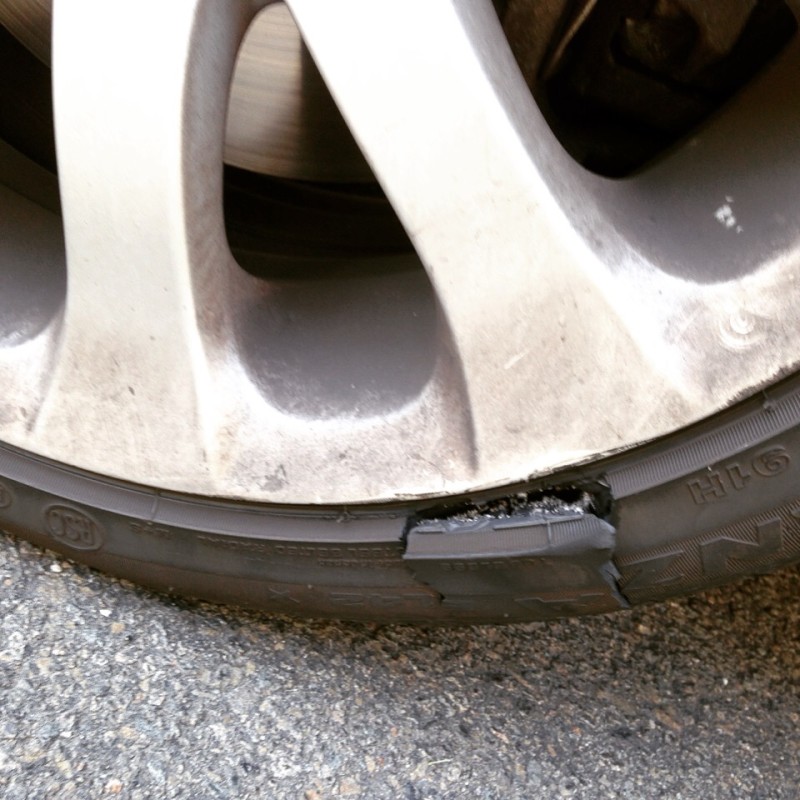 It is then allowed to air dry for 5-10 minutes.
It is then allowed to air dry for 5-10 minutes.There are a number of factors that may determine whether or not your tire is safe to repair. These factors fall into three main categories:
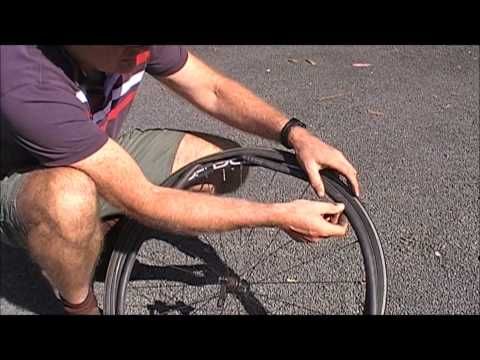
The occasional flat or leaky tire is an unavoidable part of life. But, taking shortcuts to repair it can be dangerous to you and your passengers. Take the time and do the research to do the job right and/or find a reputable tire repair shop trained in proper tire repair procedure.
02/22/2018
Despite the objective importance of the spare tire, not all drivers always have it with them.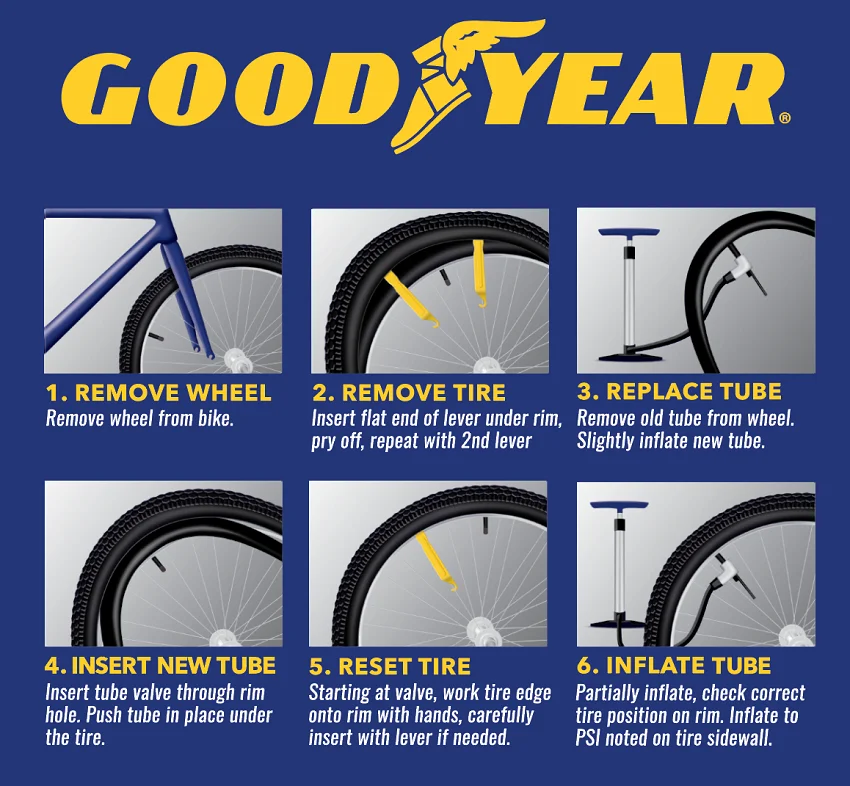 Some do not carry a spare tire out of hope or belief that their tires are invulnerable. Others deliberately take this step, as they stocked up with a special tool in advance, which, if necessary, can eliminate a tire puncture along the way. What else can be used and how to do it right? Let's figure it out.
Some do not carry a spare tire out of hope or belief that their tires are invulnerable. Others deliberately take this step, as they stocked up with a special tool in advance, which, if necessary, can eliminate a tire puncture along the way. What else can be used and how to do it right? Let's figure it out.
Contents of :
Conventionally, all methods for express tire repair can be divided into two categories:
Consider ways to restore a damaged tire on the road. The first three methods are temporary. The latter, with the right approach, allows you to completely restore the tire.
 e. preventive). A special sealing compound is pumped into all four undamaged tires. While driving, it is inside the wheel in liquid form. If the tire suddenly loses its tightness, then this composition, leaving together with the air, clogs the slot in a few seconds. This method is relevant if you have a long trip under time constraints.
e. preventive). A special sealing compound is pumped into all four undamaged tires. While driving, it is inside the wheel in liquid form. If the tire suddenly loses its tightness, then this composition, leaving together with the air, clogs the slot in a few seconds. This method is relevant if you have a long trip under time constraints. 
After removing the foreign object, the hole is processed with an awl with abrasive edges: this tool must be inserted into the puncture and cleaned and developed with intensive reciprocating movements several times.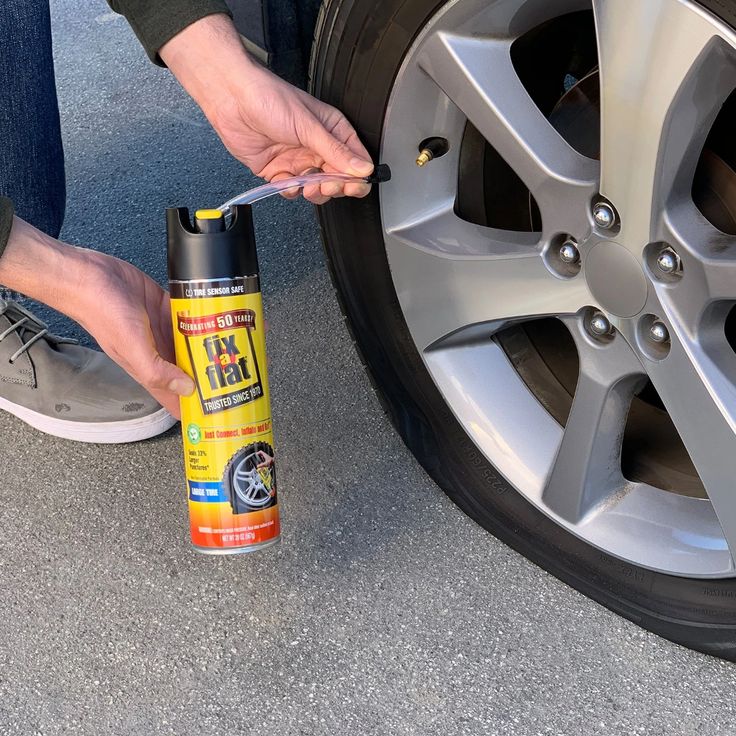 Then the raw rubber tow is removed from the package and inserted into the eye of the second awl so that both ends are the same length. The hole in the tire and the raw rubber is treated with an activator. Next, the awl is inserted into the puncture in such a way that small ends of the tourniquet, about a centimeter long, remain outside. After 5 minutes, the excess remaining on the surface is cut off. This method can also successfully eliminate small side cuts.
Then the raw rubber tow is removed from the package and inserted into the eye of the second awl so that both ends are the same length. The hole in the tire and the raw rubber is treated with an activator. Next, the awl is inserted into the puncture in such a way that small ends of the tourniquet, about a centimeter long, remain outside. After 5 minutes, the excess remaining on the surface is cut off. This method can also successfully eliminate small side cuts.
There is a technique that allows using wire and several bundles of raw rubber to get rid of even extensive side damage to tires. However, it is quite difficult to implement and not every driver will be able to implement it.
Consider a few well-known tools that are most widely used to repair punctures:
 It works in the same way as most sealants: the container is thoroughly shaken, after that a hose is attached, and the contents from the container are completely pumped into the tire. The maximum diameter of the repaired hole is 4.5 mm. This is almost always enough to repair punctures caused by nails and screws.
It works in the same way as most sealants: the container is thoroughly shaken, after that a hose is attached, and the contents from the container are completely pumped into the tire. The maximum diameter of the repaired hole is 4.5 mm. This is almost always enough to repair punctures caused by nails and screws.

Our online store offers a wide range of tire repair products. You can order them through the TopDetal.ru website or by calling 8 800 444-75-16.
Also read on our website about the best liquid rubbers.
Return to the list
If you find a flat tire, stop in a safe place, turn on the warning light, assess visibility and, if necessary, set a warning triangle: The Highway Code requires a distance of at least 15 meters from the car in a built-up area and at least 30 meters from the car outside the settlement. When choosing where to stop, consider the amount of space on the side of the vehicle that is needed to deal with a flat tire. Do not stop on the road or in places where stopping is prohibited: a punctured tire can cause a sudden stop, but you can drive several tens of meters to find a safe and convenient place to stop. At night or in conditions of limited visibility (for example, in fog or rain), it is mandatory to wear a vest with reflective elements - this is required by section 2.3.4 of the Highway Code and common sense.
When choosing where to stop, consider the amount of space on the side of the vehicle that is needed to deal with a flat tire. Do not stop on the road or in places where stopping is prohibited: a punctured tire can cause a sudden stop, but you can drive several tens of meters to find a safe and convenient place to stop. At night or in conditions of limited visibility (for example, in fog or rain), it is mandatory to wear a vest with reflective elements - this is required by section 2.3.4 of the Highway Code and common sense.
Now we can start working on the wheel. We will look at several options in turn, and then proceed to repair the damaged tire.
The most obvious solution to a flat tire is to replace it. If you have a spare tire that you know is in good condition, it's best to have it installed and have the punctured tire repaired at a car repair shop - it's much safer and better than doing it yourself.
Flat tire - punctured If you don't have a working spare but you do have an inflator or compressor, you can assess the damage to the tire and try to re-inflate it to get to a tire shop.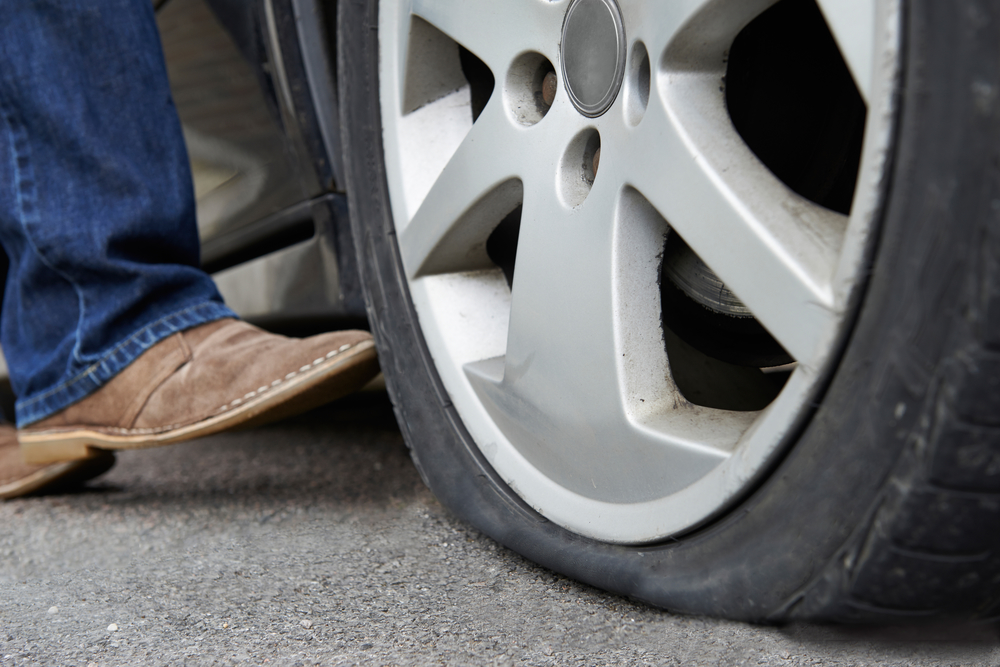 The best place to start looking for air leaks is at the valve (aka "nipple" or "nipple"): a failed nipple is often the cause of a tire puncture. It's easy to check: unscrew the protective cap (if there is one), pour water on it (or suck on it, as in childhood): air bubbles will let you know there is a leak. In this case, you can try to replace the spool valve by unscrewing it and screwing in a new one, but if a new valve is not available, and also at the nearest store, you can try just unscrewing and screwing it back. Whether it helps or not, you should visit a tire shop to have the valve core or entire valve replaced.
The best place to start looking for air leaks is at the valve (aka "nipple" or "nipple"): a failed nipple is often the cause of a tire puncture. It's easy to check: unscrew the protective cap (if there is one), pour water on it (or suck on it, as in childhood): air bubbles will let you know there is a leak. In this case, you can try to replace the spool valve by unscrewing it and screwing in a new one, but if a new valve is not available, and also at the nearest store, you can try just unscrewing and screwing it back. Whether it helps or not, you should visit a tire shop to have the valve core or entire valve replaced.
If the valve is tight and the tire is flat, it is most likely a puncture. The easiest way to find a puncture, if there are no foreign bodies, is to pour water on the tire and check its surface: damage will be detected by air bubbles. However, often the cause of a puncture can be found along with it: a screw, nail or other random object sticking out of the wheel will clearly indicate the place of depressurization. In this case, there is no need to immediately remove the foreign body: it will partially seal the hole, and if the pressure loss is slow, you can try to inflate the tire and go to the tire shop.
In this case, there is no need to immediately remove the foreign body: it will partially seal the hole, and if the pressure loss is slow, you can try to inflate the tire and go to the tire shop.
The same applies to wheels that leak around the rim or due to a faulty valve. Usually the air deflates slowly, and you can inflate the tire and drive to the repair shop. By the way, rim leaks can occur as a result of deformation of the rim upon impact - for example, when hitting a pothole with sharp edges. Such situations can lead to damage to both the rim and the tire bead, in which case the rim must be straightened and the tire repaired or even replaced. To avoid rim leakage, check the rim every time you change tires. Loss of tightness is caused either by corrosion or disk deformation, and not only steel disks are subject to corrosion, but also disks made of light alloys. Therefore, if you see paint blistering or rust on the rim, seal the tires with rim sealant: when changing tires, it will be cheaper than removing and reinstalling the tire to fix a leak on the rim.
If you find a puncture, but there are no foreign bodies in it, and you do not have a spare tire and tire repair kits, there is another popular method of temporary "repair". You can screw a self-tapping screw into the hole found - if you have one, of course. In extreme cases, you can look for a self-tapping screw in the car, unscrewing it from some interior detail. This method is not reliable: it is unlikely to completely seal the wheel, but at least it will help you get to the nearest tire shop.
Some other useful tips. If the tire is completely flat, it's easier to inflate it without the spool: unscrew the spool, then inflate the tire and quickly screw it back on. The fact is that the spool itself creates resistance to the compressor when inflated, and if the flat tire does not fit snugly against the disk, the performance of a conventional magazine compressor may not be enough, and the absence of a spool helps to increase air flow and facilitate the operation of the compressor. If that still doesn't help, you can raise the car by letting the punctured tire sag: this will improve the contact between the tire and the rim and make it more likely to inflate the tire.
If that still doesn't help, you can raise the car by letting the punctured tire sag: this will improve the contact between the tire and the rim and make it more likely to inflate the tire.
Now it's time to consider repairing your tires yourself using special materials that you can carry with you or, if you have a punctured tire in the city, buy at a local auto repair shop.
The most common, cheap and easy DIY repair method is to install a raw rubber band. The kit includes an abrasive awl to expand the hole in the tire and improve the contact of the repair tourniquet with the edges, a needle for installing the tourniquet and glue to fix it when sealing a puncture. When choosing a repair kit in the store, you should pay attention to the following points:

The wiring harness is installed in the following order. First, the hole found is expanded with an abrasive awl - it must be inserted and pulled out several times at the puncture site. Then a tourniquet is inserted into the eye of the needle and glue is applied to it. Then insert the needle with the tourniquet into the hole in the tire and quickly pull it out so that the tourniquet remains in the hole and the needle comes out without it. After that, simply cut the end of the harness so that it is flush with the tire and inflate the wheel.
The advantage of applying a tourniquet is that it is quite decent in terms of reliability, simplicity and cheapness. You can ride a repaired tire for a long time, and if the repair site starts to leak, you can replace the harness or have the tire repaired by professionals. The disadvantages include the possibility of damage to the tire cord during installation and less reliability compared to repair methods in a "full" tire shop.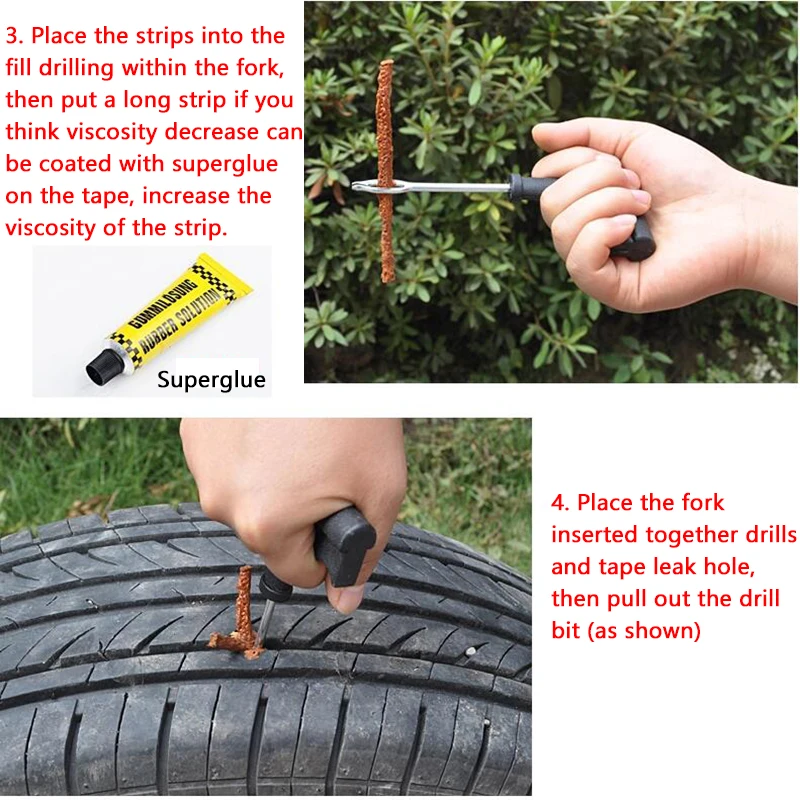 Strictly speaking, the harness is still a temporary repair, so if you can pump up the wheel and go to a tire shop, it's better not to enlarge the hole in the tire and go to the professionals.
Strictly speaking, the harness is still a temporary repair, so if you can pump up the wheel and go to a tire shop, it's better not to enlarge the hole in the tire and go to the professionals.
The second repair option is liquid aerosol sealants sold in cans. To repair a punctured tire with sealant, it is necessary to remove the foreign body from the puncture site, then pour the sealant into the wheel through the valve, turn it to distribute the compound inside the tire, inflate the wheel and drive several kilometers at low speed for the final even distribution of the sealant.
The advantages of this repair include its simplicity and less labor intensity compared to installing the strapping. However, it has its drawbacks: the larger the hole, the greater the chance that the sealant will not be able to patch it, and, in addition, such repairs can affect the balance of the wheel. Compared to a harness, it can be considered even less reliable and preferable, but simpler.
If you fit a spare tire and take the wheel to a tire shop, you may also be offered several repair options. Consider the most popular of them with an indication of the advantages and disadvantages.
1. The first way to repair is the same harness installation as described above. As we remember, the tourniquet refers to emergency repairs, so among professional tire fitters this method is considered bad form, but many workshops do not exclude it from the list of their services. The advantages and disadvantages are the same here: it will be the fastest, easiest and cheapest repair, but less reliable than other methods. It should be chosen in cases where the price and / or speed of treatment is more important to you than anything else. If quality is a priority, you might be better off using the options below.
2. The second option for repairing a punctured tire is to patch the inside of the tire, known as cold vulcanization. The tire is removed from the rim, the area around the puncture is cleaned with an abrasive and sealed with a plaster. This is a better repair solution than a harness, which is much more reliable and durable, especially in side punctures when the tire tread is not very thick and the sidewall is thinner than thick. The only downside is the higher cost: in addition to the tire repair itself, you will have to pay for the removal and installation of the wheel (or do it yourself), mounting the tire and balancing it.
The tire is removed from the rim, the area around the puncture is cleaned with an abrasive and sealed with a plaster. This is a better repair solution than a harness, which is much more reliable and durable, especially in side punctures when the tire tread is not very thick and the sidewall is thinner than thick. The only downside is the higher cost: in addition to the tire repair itself, you will have to pay for the removal and installation of the wheel (or do it yourself), mounting the tire and balancing it.
3. The third option is a "complex" of the first and second: installation of the so-called repair "mushroom". The “cap” of the mushroom is a patch, and the “leg” is pushed from the inside of the tire out. After the patch is glued into place, we cut off the excess part of the stem, similar to a tourniquet. This seals not only the inside of the tire, but the hole itself. The advantages and disadvantages of this repair method are basically the same as patching.
4 . An extreme "emergency" way to repair a punctured tire is to install an inner tube. This method is usually used for tires that are no longer worth repairing, or for "safety" after repairing a puncture joint. It is important to know that almost all modern tires are tubeless, so the inner tube should not be used for a long time, and you should not ride a wheel repaired in this way. Threading the inner tube is a temporary solution until you have to buy a new tire and sometimes you can keep it as a spare. Therefore, this repair method can be kept in mind as a fallback option.
We have deliberately left out of the scope of this text such methods as combined repair of tires and patches and hot vulcanization. The first is used quite rarely and for specific types of damage, and it is quite easy to find out about its existence. The second method is used to repair severe side cuts and is not only rare, but also quite expensive.